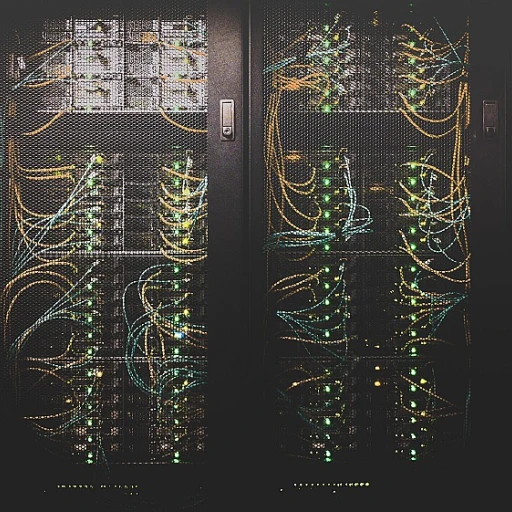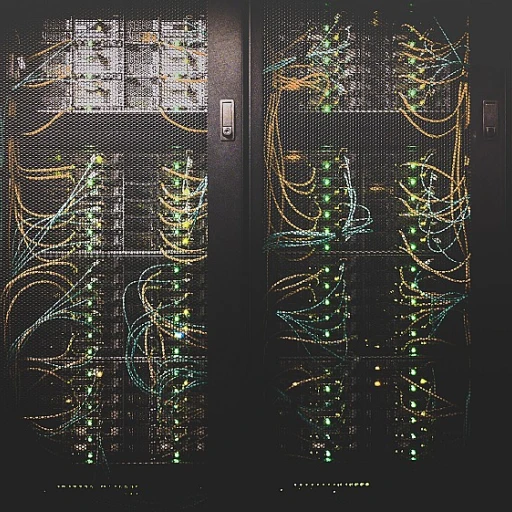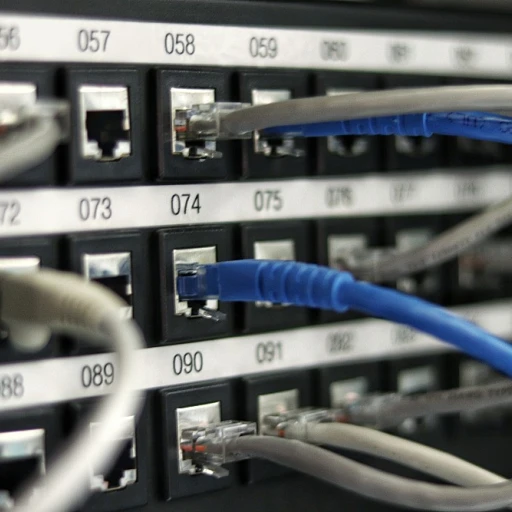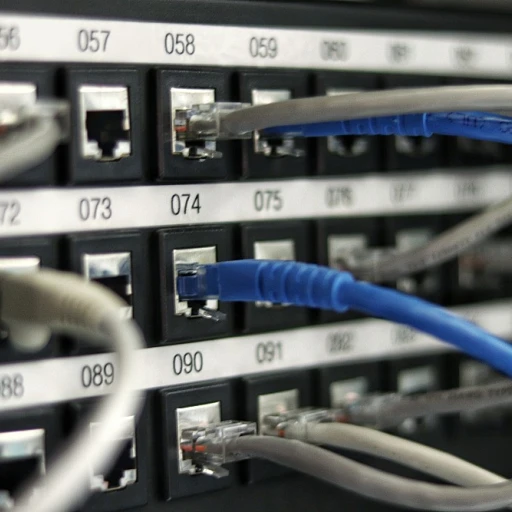
Embracing Emerging Technologies
Harnessing the Power of Emerging Technologies
As we navigate the next frontier of software development, embracing emerging technologies is crucial for crafting future-ready solutions. The tech industry is rapidly evolving, with innovations like fiber optics and HDMI connectivity products paving the way for more robust systems. Companies are increasingly turning to professional-grade solutions to ensure their products are ready for the demands of tomorrow.
Connectivity solutions are at the heart of this transformation. With the rise of fiber optic technology, businesses can now achieve faster and more reliable data transmission. This is particularly important in an era where connectivity is key to success. The integration of HDMI fiber and other advanced connectivity products ensures that systems are not only efficient but also scalable and flexible, which is essential for future growth.
Industry veterans are leading the charge in this technological revolution, providing the expertise and support needed to implement these advanced solutions. Local tech support and national networks are crucial in ensuring that businesses can seamlessly integrate these technologies into their operations. This collaborative approach is vital for staying ahead in the competitive tech landscape.
For those interested in understanding how perception technology plays a role in software development, exploring the role of perception technology in software development can provide valuable insights. By staying informed and adaptable, businesses can harness the power of emerging technologies to create innovative solutions that meet the needs of the future.
The Importance of Scalability and Flexibility
Adapting to the Future with Scalability
In the rapidly evolving tech landscape, the ability to scale is no longer just an advantage—it's a necessity. As industries integrate more advanced technologies, from fiber optics to HDMI connectivity solutions, the demand for scalable systems becomes paramount. Scalability ensures that software can handle increased loads without compromising performance, a critical factor as businesses aim to be future ready.
Scalable solutions are essential for companies looking to maintain a competitive edge. The power of scalability lies in its flexibility, allowing systems to grow alongside business needs. This adaptability is crucial in a world where connectivity products and tech support are constantly evolving. Companies like AVPro Edge and industry veterans are leading the charge in providing professional grade, scalable solutions that meet the demands of modern businesses.
Flexibility: The Key to Future-Ready Systems
Flexibility in software design is equally important. As new technologies emerge, such as fiber optic systems and advanced HDMI products, software must be able to integrate seamlessly with these innovations. This requires a flexible architecture that can accommodate new features and functionalities without extensive rework. The ability to adapt quickly to changes in the tech industry is what sets successful companies apart.
Moreover, flexibility supports the integration of open source innovations, fostering collaboration and driving the industry forward. By embracing a flexible approach, companies can join forces with others, leveraging collective expertise to create robust, future-ready solutions. This collaborative spirit is evident in initiatives like those supported by DPL Labs, which focus on developing cutting-edge connectivity solutions.
For businesses aiming to thrive in the future, investing in scalable and flexible software solutions is not just wise—it's imperative. By doing so, they can ensure their systems are equipped to handle the challenges of tomorrow, from increased connectivity demands to the integration of new technologies. To explore how these principles can enhance business operations, consider how conversational AI is transforming the banking industry.
Security Challenges in Future Software
Addressing Security in a Connected World
As we venture into the future of software, security challenges become increasingly complex. The integration of emerging technologies and the growing demand for interconnected IoT systems amplify the need for robust security measures. With the proliferation of connectivity solutions, such as HDMI and fiber optics, safeguarding data and systems is paramount.
In this rapidly evolving landscape, security is not just about protecting individual systems but also ensuring the integrity of entire networks. The industry must be ready to tackle threats that exploit vulnerabilities in connectivity products and systems. This requires a proactive approach, leveraging the power of advanced tech support and professional-grade solutions to stay ahead of potential breaches.
Building Resilient Security Frameworks
Future-ready solutions demand a focus on scalability and flexibility, ensuring that security frameworks can adapt to new threats. The role of industry veterans and experts in developing these frameworks cannot be overstated. Their insights are crucial in crafting solutions that are not only effective but also sustainable in the long term.
Organizations must join forces, fostering collaboration and innovation to address security challenges. This includes engaging with entities like DPL Labs and leveraging the expertise of local and national networks. By doing so, the industry can develop connectivity products that are both secure and efficient.
Empowering the Industry Through Collaboration
Collaboration is key to overcoming security challenges in future software. By working together, companies can share knowledge and resources, creating a united front against cyber threats. This collaborative spirit is essential for developing solutions that are both innovative and secure, ensuring that the industry remains resilient in the face of evolving challenges.
In conclusion, as we navigate software's next frontier, addressing security challenges is crucial. By embracing collaboration and leveraging the power of advanced technologies, the industry can develop solutions that are both secure and sustainable, paving the way for a safer digital future.
User-Centric Design and Experience
Prioritizing User Experience in Software Development
In the rapidly evolving landscape of software development, user-centric design has become a cornerstone for crafting solutions that are future-ready. As technology advances, the focus on creating intuitive and engaging user experiences is more critical than ever. This emphasis ensures that software not only meets the current needs of users but is also adaptable to future demands.
One of the key aspects of user-centric design is understanding the diverse needs of users across various platforms and devices. With the proliferation of connectivity solutions like HDMI and fiber optics, users expect seamless integration and performance across systems. Companies like Kordz and AVPro Edge are leading the way by providing professional-grade connectivity products that enhance user experience through reliable and high-speed data transfer.
Moreover, the industry is witnessing a shift towards more personalized and adaptive interfaces. This trend is powered by advanced technologies that allow software to learn from user interactions and adjust accordingly. The integration of such technologies ensures that software remains relevant and efficient, providing users with a tailored experience that aligns with their preferences and habits.
Incorporating user feedback is another vital component of user-centric design. By actively engaging with users and incorporating their insights, developers can create solutions that are not only innovative but also practical and user-friendly. This approach is supported by a robust tech support system, which is essential for addressing user concerns and enhancing overall satisfaction.
As the industry continues to evolve, the importance of user-centric design will only grow. By prioritizing the needs and experiences of users, developers can create software that is not only powerful and flexible but also sustainable and ready for the future. This focus on user experience is a crucial element in navigating software's next frontier, ensuring that solutions are both effective and enduring.
Sustainability in Software Development
Building a Sustainable Future in Software Development
As we look towards the future of software, sustainability emerges as a critical consideration. The tech industry is increasingly aware of its environmental impact, and the demand for sustainable solutions is growing. This shift is not just about reducing carbon footprints but also about creating systems that are efficient, durable, and adaptable to future needs.
One of the key aspects of sustainable software development is the use of energy-efficient technologies. With the rise of fiber optics and HDMI fiber solutions, companies like Kordz and AVPro Edge are leading the charge in providing professional grade connectivity products that minimize energy consumption. These technologies offer future ready solutions that support high-speed data transfer while reducing power usage.
Moreover, the integration of xtreme power systems and fiber optic networks ensures that software applications can handle increased loads without compromising on performance. This scalability is crucial as we continue to see exponential growth in data and connectivity demands.
Another important factor is the role of open source innovation in promoting sustainability. By joining forces with a national network of developers and leveraging the collective expertise of the community, companies can create more robust and adaptable software solutions. This collaborative approach not only enhances the quality of the products but also ensures that they are built with longevity in mind.
Finally, the industry must also focus on the lifecycle of software products. From development to deployment and eventual decommissioning, every stage should be designed with sustainability in mind. This includes using local tech support to reduce the need for extensive travel and utilizing connectivity solutions that are both efficient and environmentally friendly.
In conclusion, the future of software development lies in our ability to create sustainable, scalable, and flexible solutions. By embracing emerging technologies and fostering a culture of collaboration, the industry can pave the way for a more sustainable future.
Collaboration and Open Source Innovation
Harnessing the Power of Collaboration
In the ever-evolving landscape of software development, collaboration stands as a cornerstone for innovation. The future of software is not just about individual brilliance but about collective intelligence. As we navigate this next frontier, the integration of open source innovation becomes crucial. Open source platforms provide a fertile ground for developers to join forces, share insights, and create solutions that are future ready.
Industry veterans emphasize the importance of collaboration in crafting professional-grade products. By leveraging the power of community-driven development, companies can produce connectivity solutions that are not only robust but also adaptable to the changing demands of the tech industry. This approach aligns with the principles of scalability and flexibility, ensuring that systems can evolve alongside emerging technologies.
Open Source: A Catalyst for Innovation
Open source projects have become a catalyst for technological advancement. They offer a transparent framework where developers can contribute, critique, and refine software solutions. This collaborative environment fosters innovation and accelerates the development of cutting-edge technologies. For instance, the integration of HDMI fiber and fiber optic technologies in connectivity products has been significantly enhanced through open source contributions.
Organizations like DPL Labs and AVPro Edge are at the forefront of this movement, supporting the development of future-ready solutions. By embracing open source, these entities ensure that their products remain at the edge of innovation, providing reliable tech support and connectivity products that meet the demands of both local tech and national networks.
Building a Sustainable Future
Collaboration in software development also plays a pivotal role in promoting sustainability. By pooling resources and expertise, developers can create solutions that are not only efficient but also environmentally friendly. This aligns with the broader industry trend towards sustainability in software development, where the focus is on reducing the carbon footprint of tech products.
In conclusion, the future of software is bright, with collaboration and open source innovation leading the charge. As we continue to explore new frontiers, the synergy between developers, industry veterans, and tech companies will be instrumental in crafting solutions that are both innovative and sustainable.















